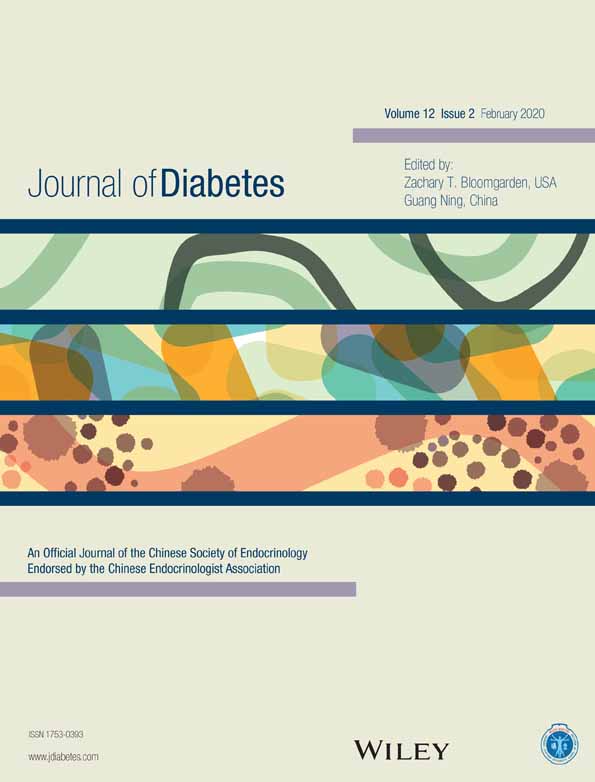Association between insulin and post-caesarean resuscitation rates in infants of women with GDM: A retrospective study
GDM孕妇中胰岛素使用与剖腹产后婴儿复苏率的关系:一项回顾性研究
Abstract
enBackground
Gestational diabetes mellitus (GDM) and caesarean deliveries independently increase the risk of postoperative complications. There are limited data on the influence of insulin use on the outcomes of neonates who were delivered via caesarean section. We sought to investigate the impact of insulin use in women with GDM on resuscitation rates of infants post caesarean delivery.
Methods
A retrospective database review of women with singleton term (≥ 37 weeks) pregnancies who were on insulin for GDM delivering between January 2005 and December 2014 at a major metropolitan hospital in Sydney.
Results
One thousand eight hundred and fifty-seven women with GDM were identified. The mean age was 31.01 ± 5.63 years and mean gestational period of 39.07 ± 1.00 weeks. 31.0% received insulin treatment for GDM. Women who were on insulin were older (31.9 ± 5.7 vs 30.6 ± 5.6 years, P < 0.001), had a higher body mass index (BMI) (31.2 ± 7.7 vs 29.0 ± 7.4 kg/m2, P < 0.001), higher rates of preeclampsia (7.3% vs 4.1%, P = 0.004), lower rates of alcohol consumption (0.4% vs 1.7%, P = 0.014), and had infants with lower resuscitation rates (21.2% vs 28.6%, P = 0.001). Infants who required resuscitation had a lower gestational age, lower five-minute APGAR score, and lower birth weight, length, and head circumferences. On multivariate analysis, women with GDM treated with insulin (odds ratio [OR] = 0.69, CI = 0.54-0.89, P = 0.004), higher gestational age (OR = 0.88, CI = 0.78-0.99, P = 0.032), higher maternal BMI (OR = 1.02, CI = 1.01-1.04, P = 0.005), and emergency caesarean (OR = 2.33, CI = 1.74-3.12, P < 0.001) independently predicted incidence of resuscitation.
Conclusions
The findings suggest a relationship between insulin use and reduced resuscitation rates of infants born from mothers with GDM. Further studies investigating the role, dosage, and criteria for insulin use in women with GDM are required.
摘要
zh背景
妊娠期糖尿病(gestational diabetes mellitus, GDM)与剖腹产可独立增加术后并发症风险。关于胰岛素使用对剖腹产新生儿结局的影响, 目前的数据有限。本研究旨在探讨GDM孕妇使用胰岛素对剖腹产婴儿复苏率的影响。
方法
这是一项回顾性数据库研究, 调查了2005年1月至2014年12月间在悉尼一家大型城市医院中使用胰岛素治疗GDM并且分娩单胎足月婴儿(≥37周)的妊娠女性的数据。
结果
共确认了1857名GDM孕妇。平均年龄31.01±5.63岁, 平均妊娠期为39.07±1.00周。31.0%的GDM孕妇接受了胰岛素治疗。接受胰岛素治疗的女性年龄更大(31.9±5.7 vs. 30.6 ± 5.6岁, P<0.001)、体重指数(BMI)更高(31.2±7.7 vs. 29.0±7.4 kg/m2, P<0.001)、先兆子痫的发病率更高(7.3% vs. 4.1%, P=0.004)、饮酒的比例更低(0.4% vs. 1.7%, P=0.014), 并且其分娩的婴儿复苏率更低(21.2% vs. 28.6%, P=0.001)。需要复苏的婴儿胎龄更小, 5分钟APGAR评分更低, 出生体重、身高与头围均更低。多因素分析发现, GDM孕妇使用胰岛素治疗(比值比[OR]=0.69, CI=0.54-0.89, P=0.004)、孕龄更高(OR=0.88, CI=0.78-0.99, P=0.032)、母亲BMI更高(OR=1.02, CI=1.01-1.04, P=0.005)、紧急剖腹产(OR=2.33, CI=1.74-3.12, P<0.001)均可独立预测婴儿的复苏率。
结论
研究结果表明, GDM孕妇使用胰岛素治疗可导致所分娩的婴儿复苏率降低。需要进一步研究GDM孕妇使用胰岛素治疗的影响、剂量以及标准。




